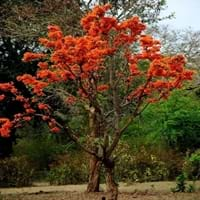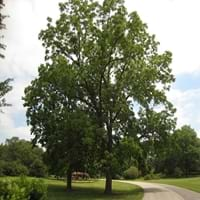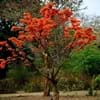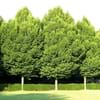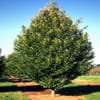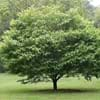Life Span
Perennial
Perennial
Origin
Southern Asia, India
United States, Northeastern United States, Mid-Atlantic United States, Southeastern United States, North-Central United States, Central United States, South-Central United States, Texas, Canada
Types
Not Available
Not Available
Habitat
Subtropical climates, Tropical Climate
bottomlands, Moist woods
USDA Hardiness Zone
10-13
4-9
Sunset Zone
H1, H2, 23, 24
1a, 1b, 2a, 2b, 3a, 3b, 4, 5, 6, 7, 8, 9, 14, 15, 16, 17, 18, 19, 20, 21
Habit
Upright/Erect
Oval or Rounded
Flower Color
Orange, Black
Yellow green
Flower Color Modifier
Bicolor
Bicolor
Fruit Color
Bronze, Sandy Brown
Green, Chocolate
Leaf Color in Spring
Green
Green
Leaf Color in Summer
Dark Green
Green, Dark Green
Leaf Color in Fall
Dark Green
Yellow, Dark Green, Yellow green, Gold
Leaf Color in Winter
Not Available
Not Available
Leaf Shape
Pinnate
Pinnate
Plant Season
Spring, Winter
Spring, Summer, Fall
Sunlight
Full Sun, Partial Sun
Full Sun
Growth Rate
Medium
Medium
Type of Soil
Loam, Sand
Clay, Loam, Sand
The pH of Soil
Acidic, Neutral
Acidic, Neutral
Soil Drainage
Well drained
Well drained
Bloom Time
Early Spring, Late Winter
Late Spring, Early Summer
Tolerances
Drought
Not Available
Where to Plant?
Ground
Ground
How to Plant?
Seedlings
Seedlings
Plant Maintenance
Medium
Medium
Watering Requirements
Average Water Needs
Average Water Needs, Requires regular watering
In Summer
Lots of watering
Lots of watering
In Spring
Moderate
Moderate
In Winter
Average Water
Average Water
Soil pH
Acidic, Neutral
Acidic, Neutral
Soil Type
Loam, Sand
Clay, Loam, Sand
Soil Drainage Capacity
Well drained
Well drained
Sun Exposure
Full Sun, Partial Sun
Full Sun
Pruning
Remove damaged leaves, Remove dead branches, Remove dead leaves
Prune in early spring, Prune when plant is dormant, Remove branches, Remove damaged leaves, Remove dead branches, Remove dead leaves, Remove dead or diseased plant parts
Fertilizers
All-Purpose Liquid Fertilizer
Apply NPK fertilizer at the ratio of 6-24-24
Pests and Diseases
Rats
Red blotch
Plant Tolerance
Drought
Not Available
Flowers
Showy
Insignificant
Flower Petal Number
Single
Not Available
Fragrant Bark/Stem
No
Yes
Foliage Texture
Medium
Coarse
Foliage Sheen
Matte
Glossy
Attracts
Birds, Hummingbirds
Birds, Butterflies
Allergy
Anaemia, Kidney Disease
Anaphylaxis, Toxic
Aesthetic Uses
Not Used For Aesthetic Purpose
Not Used For Aesthetic Purpose
Beauty Benefits
Not Available
Good for skin
Environmental Uses
Air purification
Air purification, Shadow Tree
Medicinal Uses
Analgesic, anti-inflammatory, antimicrobial, Astringent, Diuretic
Cancer, Coronary diseases, Cures constipation, Diarrhea, Diphtheria, High cholestrol, Immunity, Intestinal worms, Leukemia, Skin wounds, Sore throat, Syphilis, Use as a gargle
Part of Plant Used
Flowers, Gum, Leaves
Fruits
Other Uses
Used as a dyeing color for fabric, used for making charcoal, Used to make leather, Used to prepare a traditional Holi colour
Used As Food, Used as Ornamental plant
Used As Indoor Plant
No
No
Used As Outdoor Plant
Yes
Yes
Garden Design
Feature Plant, Shade Trees, Tropical
Feature Plant, Shade Trees
Botanical Name
BUTEA monosperma
JUGLANS nigra
Common Name
Flame-of-the-forest, Parrot Tree
Black Walnut
In Hindi
पलाश
काले अखरोट के पेड़
In German
Flamme -of -the- Wald
Schwarz Walnussbaum
In French
Flame -of-the -forest
Noir noyer
In Spanish
Llama - de - la - bosque
nogal negro
In Greek
Φλόγα - of-the - δάσος
Μαύρη καρυδιά
In Portuguese
Chama -of-the -forest
nogueira preta
In Polish
Płomień -of -the- las
Czarny orzech drzewo
In Latin
Flamma -of - Silva
Niger walnut tree
Phylum
Magnoliophyta
Magnoliophyta
Class
Magnoliopsida
Magnoliopsida
Order
Fabales
Juglandales
Family
Fabaceae
Juglandaceae
Clade
Angiosperms, Eudicots, Rosids
Angiosperms, Eudicots, Rosids
Tribe
Phaseoleae
Juglandeae
Subfamily
Faboideae
Juglandinae
Number of Species
Not Available
Importance of Flame-of-the-forest and Black Walnut
Want to have the most appropriate plant for your garden? You might want to know the importance of Flame-of-the-forest and Black Walnut. Basically, these two plants vary in many aspects. Compare Flame-of-the-forest and Black Walnut as they differ in many characteristics such as their life, care, benefits, facts, etc. Every gardener must at least have the slightest clue about the plants he wants to plant in his garden. Compare their benefits, which differ in many ways like facts and uses. The medicinal use of Flame-of-the-forest is Analgesic, anti-inflammatory, antimicrobial, Astringent and Diuretic whereas of Black Walnut is Cancer, Coronary diseases, Cures constipation, Diarrhea, Diphtheria, High cholestrol, Immunity, Intestinal worms, Leukemia, Skin wounds, Sore throat, Syphilis and Use as a gargle. Flame-of-the-forest has beauty benefits as follows: Not Available while Black Walnut has beauty benefits as follows: Not Available.
Compare Facts of Flame-of-the-forest vs Black Walnut
How to choose the best garden plant for your garden depending upon its facts? Here garden plant comparison will help you to solve this query. Compare the facts of Flame-of-the-forest vs Black Walnut and know which one to choose. As garden plants have benefits and other uses, allergy is also a major drawback of plants for some people. Allergic reactions of Flame-of-the-forest are Anaemia and Kidney Disease whereas of Black Walnut have Anaphylaxis and Toxic respectively. Having a fruit bearing plant in your garden can be a plus point of your garden. Flame-of-the-forest has no showy fruits and Black Walnut has showy fruits. Also Flame-of-the-forest is not flowering and Black Walnut is not flowering . You can compare Flame-of-the-forest and Black Walnut facts and facts of other plants too.
